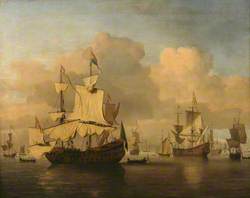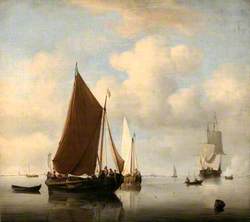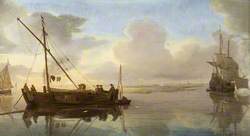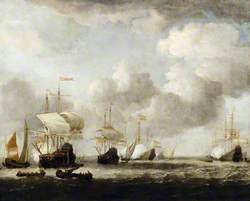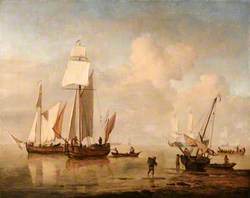How you can use this image
This image can be used for non-commercial research or private study purposes, and other UK exceptions to copyright permitted to users based in the United Kingdom under the Copyright, Designs and Patents Act 1988, as amended and revised. Any other type of use will need to be cleared with the rights holder(s).
Review the copyright credit lines that are located underneath the image, as these indicate who manages the copyright (©) within the artwork, and the photographic rights within the image.
The collection that owns the artwork may have more information on their own website about permitted uses and image licensing options.
Review our guidance pages which explain how you can reuse images, how to credit an image and how to find images in the public domain or with a Creative Commons licence available.
Notes
Add or edit a note on this artwork that only you can see. You can find notes again by going to the ‘Notes’ section of your account.
To the left is the 'Royal Sovereign' in starboard-quarter view and at anchor. The Royal Standard flies at the main, the Admiralty flag at the fore and the Union flag at the mizzen. She is firing a salute to port and a number of figures are visible on the deck and in the rigging. This 100-gun, first-rate ship was built by Fisher Harding at Woolwich Dockyard in 1701 and she can be identified by the large horse and rider on her taffrail, below the middle lantern. She was regarded as the greatest ship in the world and her decorations were elaborately carved – at such huge expense in fact that the Admiralty thereafter severely restricted the carving that ships were allowed to have, according to their importance. It is possible that this is the scene at Spithead on 4 June 1702 when Prince George of Denmark dined on board the 'Royal Sovereign' with the Duke of Ormonde.
The artist was younger son of Willem van de Velde the Elder. He worked in his father's studio and developed the skill of carefully drawing ships in tranquil settings. He changed his subject matter, however, when he came with his father to England in 1672–1673, by a greater concentration on royal yachts, men-of-war and storm scenes. From this time painting sea battles for Charles II and his brother (and Lord High Admiral) James, Duke of York, and other patrons, became a priority.
Title
The English Ship 'Royal Sovereign' with a Royal Yacht in a Light Air
Date
1703
Medium
oil on canvas
Measurements
H 180.3 x W 144.7 cm
Accession number
BHC3614
Work type
Painting



